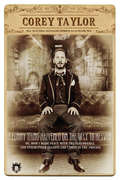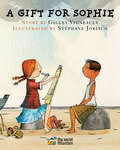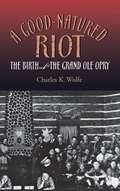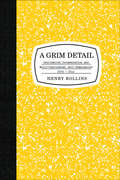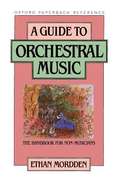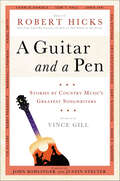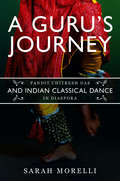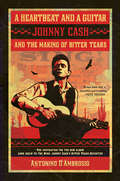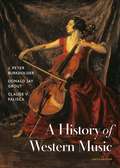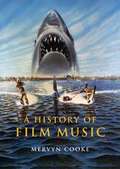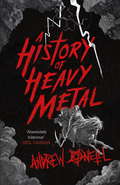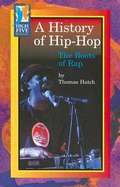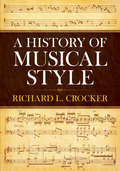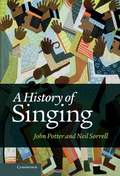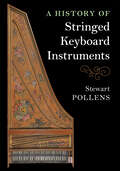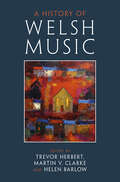- Table View
- List View
A Funny Thing Happened on the Way to Heaven: (Or, How I Made Peace with the Paranormal and Stigmatized Zealots and Cynics in the Process)
by Corey TaylorIn this book, Corey Taylor undertakes something never before attempted in the history of rock superstardom: he takes you with him as he journeys undercover through various ghostbusting groups who do their best to gather information and evidence about the existence of spirits. Some are more credible than others, and, frankly, some are completely insane, but all are observed with appropriate seriousness as Taylor attempts to better understand some of the spooky things that have happened to him in his life, especially that night at the Cold House.But that's not all, folks. Taylor once again gives you a behind-the-scenes tour of his crazy life and the many beyond-the-grave events he's encountered. (You'll be shocked how often Slipknot has been invaded by the supernatural.) Taylor also touches on his religious background and how it led him to believe in much more than the Man in the Sky.
A Gift for Sophie
by Gilles VigneaultWinner of:Parents' Choice Recommended Award In this touching, poetic story set by the seaside, Old Man Tom teaches Sophie and Emilio the importance of seeing the world through their hearts. Presenting children with profound messages about friendship and gifts as well as old age and continuity, the book and accompanying CD offers a heartwarming perspective for the whole family. In addition to a production of the narrated story, the CD includes nine songs ranging from "A Friend That I Like" and "It's in the Nature of Things" to "I Have a Nest Full" and "The Old Man's House."
A Gift of Hope: The Tony Melendez Story
by Mel White Tony MelendezFrom the Publisher: The inspiring story of a young thalidomide victim and talented musician who has gained international recognition. Wonderful reading for anyone--especially those facing seemingly insurmountable difficulties. ... This is a beautifully, and positively, written autobiography. Melendez neither downplays his and his family's struggles resulting from his lack of arms, nor does he whine about them. Writing about his father, "Still, he knew that only in America would he find the kind of medical treatment I needed, so he put his own dreams aside and began to dream for me. He was young, strong, and determined to provide for each of us-but especially, I believe, for me. Imagine his growing frustration as he tried to support us on the minimum wage jobs that he could find. And there was no extra time or money to train in another field. [In Nicaragua, he was educated and accomplished in the fields of agriculture and animal husbandry.] Instead, he found himself in a huge pool of cheap labor as more and more unskilled young people migrated to America."
A Glad Obedience: Why and What We Sing
by Walter BrueggemannThe Christian practice of hymn singing, says renowned biblical scholar Walter Brueggemann, is a countercultural act. It marks the Christian community as different from an unforgiving and often ungrateful culture. It is also, he adds, an "absurd enterprise” in the midst of the hyper-busy, market-driven society that surrounds us. In this helpful and engaging volume, Brueggemann discusses both why we sing and what we sing. The first part of the book examines the Psalms and what they can teach us about the reasons that corporate song is a part of the Christian tradition. The second part looks at fifteen popular hymns, including classic and contemporary ones such as “Blest Be the Ties That Binds,” “God's Eye Is on the Sparrow,” “Once to Every Man and Nation,” “Someone Asked the Question,” and “We Are Marching in the Light of God,” and the reasons why they have caught our imagination.
A Good-Natured Riot: The Birth of the Grand Ole Opry (Co-published with the Country Music Foundation Press)
by Charles K. WolfeWinner of the Ralph J. Gleason Music Book AwardWinner of the ASCAP Deems Taylor AwardOn November 28, 1925, a white-bearded man sat before one of Nashville radio station WSM's newfangled carbon microphones to play a few old-time fiddle tunes. Uncle Jimmy Thompson played on the air for an hour that night, and throughout the region listeners at their old crystal sets suddenly perked up. Back in Nashville the response at the offices of National Life Insurance Company, which owned radio station WSM ("We Shield Millions"), was dramatic; phone calls and telegrams poured into the station, many of them making special requests. It was not long before station manager George D. Hay was besieged by pickers and fiddlers of every variety, as well as hoedown bands, singers, and comedians—all wanting their shot at the Saturday night airwaves. "We soon had a good-natured riot on our hands," Hay later recalled. And, thus, the Opry was born.Or so the story goes. In truth, the birth of the Opry was a far more complicated event than even Hay, "the solemn old Judge," remembered. The veteran performers of that era are all gone now, but since the 1970s pioneering country music historian Charles K. Wolfe has spent countless hours recording the oral history of the principals and their families and mining archival materials from the Country Music Foundation and elsewhere to understand just what those early days were like. The story that he has reconstructed is fascinating. Both a detailed history and a group biography of the Opry's early years, A Good-Natured Riot provides the first comprehensive and thoroughly researched account of the personalities, the music, and the social and cultural conditions that were such fertile ground for the growth of a radio show that was to become an essential part of American culture.Wolfe traces the unsure beginnings of the Opry through its many incarnations, through cast tours of the South, the Great Depression, commercial sponsorship by companies like Prince Albert Tobacco, and the first national radio linkups. He gives colorful and engaging portraits of the motley assembly of the first Opry casts—amateurs from the hills and valleys surrounding Nashville, like harmonica player Dr. Humphrey Bate ("Dean of the Opry") and fiddler Sid Harkreader, virtuoso string bands like the Dixieliners, colorful hoedown bands like the Gully Jumpers and the Fruit Jar Drinkers, the important African American performer DeFord Bailey, vaudeville acts and comedians like Lasses and Honey, through more professional groups such as the Vagabonds, the Delmore Brothers, Bill Monroe and the Blue Grass Boys, and perennial favorite Roy Acuff and his Smoky Mountain Boys.With dozens of wonderful photographs and a complete roster of every performer and performance of these early Opry years, A Good-Natured Riot gives a full and authoritative portrayal of the colorful beginnings of WSM's barn dance program up to 1940, by which time the Grand Ole Opry had found its national audience and was poised to become the legendary institution that it remains to this day.
A Good-Natured Riot: The Birth of the Grand Ole Opry (Co-published with the Country Music Foundation Press)
by Charles K. WolfeWinner of the Ralph J. Gleason Music Book AwardWinner of the ASCAP Deems Taylor Award On November 28, 1925, a white-bearded man sat before one of Nashville radio station WSM's newfangled carbon microphones to play a few old-time fiddle tunes. Uncle Jimmy Thompson played on the air for an hour that night, and throughout the region listeners at their old crystal sets suddenly perked up. Back in Nashville the response at the offices of National Life Insurance Company, which owned radio station WSM ("We Shield Millions"), was dramatic; phone calls and telegrams poured into the station, many of them making special requests. It was not long before station manager George D. Hay was besieged by pickers and fiddlers of every variety, as well as hoedown bands, singers, and comedians--all wanting their shot at the Saturday night airwaves. "We soon had a good-natured riot on our hands," Hay later recalled. And, thus, the Opry was born. Or so the story goes. In truth, the birth of the Opry was a far more complicated event than even Hay, "the solemn old Judge," remembered. The veteran performers of that era are all gone now, but since the 1970s pioneering country music historian Charles K. Wolfe has spent countless hours recording the oral history of the principals and their families and mining archival materials from the Country Music Foundation and elsewhere to understand just what those early days were like. The story that he has reconstructed is fascinating. Both a detailed history and a group biography of the Opry's early years, A Good-Natured Riot provides the first comprehensive and thoroughly researched account of the personalities, the music, and the social and cultural conditions that were such fertile ground for the growth of a radio show that was to become an essential part of American culture. Wolfe traces the unsure beginnings of the Opry through its many incarnations, through cast tours of the South, the Great Depression, commercial sponsorship by companies like Prince Albert Tobacco, and the first national radio linkups. He gives colorful and engaging portraits of the motley assembly of the first Opry casts--amateurs from the hills and valleys surrounding Nashville, like harmonica player Dr. Humphrey Bate ("Dean of the Opry") and fiddler Sid Harkreader, virtuoso string bands like the Dixieliners, colorful hoedown bands like the Gully Jumpers and the Fruit Jar Drinkers, the important African American performer DeFord Bailey, vaudeville acts and comedians like Lasses and Honey, through more professional groups such as the Vagabonds, the Delmore Brothers, Bill Monroe and the Blue Grass Boys, and perennial favorite Roy Acuff and his Smoky Mountain Boys. With dozens of wonderful photographs and a complete roster of every performer and performance of these early Opry years, A Good-Natured Riot gives a full and authoritative portrayal of the colorful beginnings of WSM's barn dance program up to 1940, by which time the Grand Ole Opry had found its national audience and was poised to become the legendary institution that it remains to this day.
A Grim Detail
by Henry RollinsA Grim Detail shoulders the anchor, drags it onward from the end of 2008 and then hurls to the ground in2010. A world tour, two documentaries and journeys that include North Korea, South Sudan, Saudi Arabia, Mongolia and many others are contained herein."Oh no, not another one!" was said or implied by almost everyone involved in the making of this book.Actually, no-it was all of us. After three on and off years of proofreading and editing, A Grim Detail became the kid who no one wanted to play with.Don't laugh. I was that kid, and I am this book, well, you know what I mean.But then, in the early days of 2014, work on A Grim Detail concluded. The relief was total,the contempt, incalculable, the ridicule to come, too painful to imagine.Now, the damn thing is all yours. Have a good cringe and thank you for everything.--Henry Rollins
A Guide to Orchestral Music
by Ethan MorddenRelaxed and accessible in style, this authoritative guide is the first symphony handbook for non-musicians. The book begins with a general introduction to the symphony and short pieces on the orchestra and musical styles. Mordden goes on to describe, chronologically, over 700 pieces--from Vivaldi to twentieth-century composers. Further aids to the reader include two lists of repertory builders and a glossary of musical terms. "Easy and pleasurable to read...a genuinely useful guide for the music lover who has not had a musical education but loves concert music."--John Barkham Reviews
A Guitar and a Pen: Stories by Country Music's Greatest Songwriters
by Robert HicksNothing tells a story better than the story-songs of country music. A Guitar and A Pen presents, for the first time, the literary work of some of the best storytellers in the world: the songwriters who cut and polish tales down to sparkling three-minute gems. A blend of humor and poignancy, these tales range from Kris Kristofferson's charming tale of how an explicit natural rock formation causes chaos in a small farming town, to the domestic drama of a Kentucky family with six daughters, to Charlie Daniels' character-driven fable of money and unhappiness, to Gary Nicholson's riveting tale of an albino African American singer/songwriter who inspired him to be a musician. A celebration of music and storytelling, other contributors include Hal Ketchum, Janis Ian, Mark D. Sanders, Tom T. Hall, Marshall Chapman, and Robert Hicks, among many other notable Nashville luminaries.
A Guru’s Journey: Pandit Chitresh Das and Indian Classical Dance in Diaspora (Music in American Life)
by Sarah MorelliAn important modern exponent of Asian dance, Pandit Chitresh Das brought kathak to the United States in 1970. The North Indian classical dance has since become an important art form within the greater Indian diaspora. Yet its adoption outside of India raises questions about what happens to artistic practices when we separate them from their broader cultural contexts. A Guru's Journey provides an ethnographic study of the dance form in the San Francisco Bay Area community formed by Das. Sarah Morelli, a kathak dancer and one of Das's former students, investigates issues in teaching, learning, and performance that developed around Das during his time in the United States. In modifying kathak's form and teaching for Western students, Das negotiates questions of Indianness and non-Indianness, gender, identity, and race. Morelli lays out these issues for readers with the goal of deepening their knowledge of kathak aesthetics, technique, and theory. She also shares the intricacies of footwork, facial expression in storytelling, and other aspects of kathak while tying them to the cultural issues that inform the dance.
A Head Full of Music: The soundtrack to my life
by Cliff RichardForeword by Bob StanleyOn a sunny Saturday morning in May 1956, a fifteen-year-old, then called Harry Webb, was mooching down Waltham Cross High Street. He heard some music blaring out of a parked car. It stopped him in his tracks.The song was 'Heartbreak Hotel' by Elvis Presley. It sounded like nothing he had ever heard before. In that instant, the schoolboy who was destined to take the hit parade by storm as Cliff Richard fell in love with rock and roll. It gave him the thrill, the purpose and the mission that has shaped his life ever since.Cliff lives in and for music. And with 65 years as a hitmaker, the music filling his head is a broad category. His soundtrack begins by blasting us all back into that first life-changing explosion of rock and roll, and also includes great soul stars such as Aretha Franklin, longtime colleagues like Elton John, and much-missed close friends Cilla Black and Olivia Newton-John.This book is meaningful to Cliff on many levels. The 30 or so songs here that make up the soundtrack to his life have each moved him deeply, but it's also about the legendary artists he met, and often got to know. He shares those stories and memories with you, too.A Head Full of Music is a vibrant personal journey for Cliff, and it's a joy to accompany him on it. Get wired for sound with him and read on.
A Heartbeat and a Guitar: Johnny Cash and the Making of Bitter Tears
by Antonino D'AmbrosioA Heartbeat and a Guitar tells of the collaboration of two distinct yet connected musicians-iconoclast Johnny Cash and pioneering folk artist Peter La Farge-and the album they created, Bitter Tears: Ballads of the American Indian. It also tells of the unique personal, political, and cultural struggles that informed this album, one that has influenced the likes of Bruce Springsteen and Bob Dylan. D’Ambrosio has interviewed dozens of Cash’s and La Farge’s friends, family, and collaborators, including surviving members of his band, his producers, and Pete Seeger and Kris Kristofferson, creating a dramatic picture of both an era of radical protest and the making of one of the most controversial and enduring works of political pop art of the 1960s.
A History Of Western Music
by J. Burkholder Claude Palisca Donald GroutThe definitive survey, combining current scholarship with a vibrant narrative. Carefully informed by feedback from dozens of scholars, it remains the book that students and teachers trust to explain what’s important, where it fits, and why it matters. Peter Burkholder weaves a compelling story of people, their choices, and the western musical tradition that emerged. From chant to hip-hop, he connects past to present to create a context for tomorrow’s musicians.
A History of Film Music
by Mervyn CookeThis book provides a comprehensive and lively introduction to the major trends in film scoring from the silent era to the present day, focussing not only on dominant Hollywood practices but also offering an international perspective by including case studies of the national cinemas of the UK, France, India, Italy, Japan and the early Soviet Union. The book balances wide-ranging overviews of film genres, modes of production and critical reception with detailed non-technical descriptions of the interaction between image track and soundtrack in representative individual films. In addition to the central focus on narrative cinema, separate sections are also devoted to music in documentary and animated films, film musicals and the uses of popular and classical music in the cinema. The author analyses the varying technological and aesthetic issues that have shaped the history of film music, and concludes with an account of the modern film composer's working practices.
A History of Heavy Metal
by Andrew O'NeillThe history of heavy metal brings brings us extraordinary stories of larger-than-life characters living to excess, from the household names of Ozzy Osbourne, Lemmy, Bruce Dickinson and Metallica (SIT DOWN, LARS!), to the brutal notoriety of the underground Norwegian black metal scene and the New Wave Of British Heavy Metal. It is the story of a worldwide network of rabid fans escaping everyday mundanity through music, of cut-throat corporate arseholes ripping off those fans and the bands they worship to line their pockets. <p><p>The expansive pantheon of heavy metal musicians includes junkies, Satanists and murderers, born-again Christians and teetotallers, stadium-touring billionaires and toilet-circuit journeymen. Award-winning comedian and life-long heavy metal obsessive Andrew O'Neill has performed his History of Heavy Metal comedy show to a huge range of audiences, from the teenage metalheads of Download festival to the broadsheet-reading theatre-goers of the Edinburgh Fringe. <p><p>Now, in his first book, he takes us on his own very personal and hilarious journey through the history of the music, the subculture, and the characters who shaped this most misunderstood genre of music.
A History of Heavy Metal: 'Absolutely hilarious' – Neil Gaiman
by Andrew O'Neill'Absolutely hilarious' - Neil Gaiman'One of the funniest musical commentators that you will ever read . . . loud and thoroughly engrossing' - Alan Moore'A man on a righteous mission to persuade people to "lay down your souls to the gods rock and roll".' - The Sunday Times'As funny and preposterous as this mighty music deserve' - John HiggsThe history of heavy metal brings brings us extraordinary stories of larger-than-life characters living to excess, from the household names of Ozzy Osbourne, Lemmy, Bruce Dickinson and Metallica (SIT DOWN, LARS!), to the brutal notoriety of the underground Norwegian black metal scene and the New Wave Of British Heavy Metal. It is the story of a worldwide network of rabid fans escaping everyday mundanity through music, of cut-throat corporate arseholes ripping off those fans and the bands they worship to line their pockets. The expansive pantheon of heavy metal musicians includes junkies, Satanists and murderers, born-again Christians and teetotallers, stadium-touring billionaires and toilet-circuit journeymen. Award-winning comedian and life-long heavy metal obsessive Andrew O'Neill has performed his History of Heavy Metal comedy show to a huge range of audiences, from the teenage metalheads of Download festival to the broadsheet-reading theatre-goers of the Edinburgh Fringe. Now, in his first book, he takes us on his own very personal and hilarious journey through the history of the music, the subculture, and the characters who shaped this most misunderstood genre of music.
A History of Heavy Metal: 'Absolutely hilarious' – Neil Gaiman
by Andrew O'Neill'Absolutely hilarious' - Neil Gaiman'One of the funniest musical commentators that you will ever read . . . loud and thoroughly engrossing' - Alan Moore'Relentlessly energetic and frequently hilarious' - The Herald'A man on a righteous mission to persuade people to "lay down your souls to the gods rock and roll"' - The Sunday Times'A love letter to Heavy Metal' - BBC RADIO 4 'As funny and preposterous as this mighty music deserve' - John HiggsThe history of heavy metal brings brings us extraordinary stories of larger-than-life characters living to excess, from the household names of Ozzy Osbourne, Lemmy, Bruce Dickinson and Metallica (SIT DOWN, LARS!), to the brutal notoriety of the underground Norwegian black metal scene and the New Wave Of British Heavy Metal. It is the story of a worldwide network of rabid fans escaping everyday mundanity through music, of cut-throat corporate arseholes ripping off those fans and the bands they worship to line their pockets. The expansive pantheon of heavy metal musicians includes junkies, Satanists and murderers, born-again Christians and teetotallers, stadium-touring billionaires and toilet-circuit journeymen. Award-winning comedian and life-long heavy metal obsessive Andrew O'Neill has performed his History of Heavy Metal comedy show to a huge range of audiences, from the teenage metalheads of Download festival to the broadsheet-reading theatre-goers of the Edinburgh Fringe. Now, in his first book, he takes us on his own very personal and hilarious journey through the history of the music, the subculture, and the characters who shaped this most misunderstood genre of music.
A History of Hip-Hop: The Roots of Rap
by Thomas HatchDescribes the history of rap music and the hip-hop culture.
A History of Music in the Czech Lands
by Martin Nedbal Kelly St. Pierre Hana Vlhová-WörnerIn a collection of essays from prominent music scholas both in the Czech Republic and abroad, this book provides a nuanced overview of major topics connected to the history of musical culture in the Czech lands (Bohemia, Moravia, and Silesia) from the Middle Ages to the present. Whereas most previous English-language musicological scholarship on the Czech lands focused solely on music that was understood as ethnically Czech, this book also considers musical cultures of non-Czech groups that lived, and sometimes still live, in the geographical area, most importantly people of German, Jewish, and Romani backgrounds. Spanning over a thousand years, this book combines innovative approaches to present nuanced perspectives on a complicated musical tradition. This is the first overview of music in the Czech lands to provide such an inclusive view of the region's musical developments.
A History of Musical Style (Dover Books on Music)
by Richard L. CrockerStyle -- the distinctive manner of presentation, construction, and execution in any art -- is a topic of primary importance in music history. This highly regarded text by noted musicologist Richard Crocker (University of California, Berkeley) takes a much-needed fresh look at the subject and attempts to reshape some basic ideas in the light of modern research. Seeking the reasons for stylistic change within the history of style itself (rather than in the history of men or of ideas), this enlightening account shows how music, growing out of its own past, has shaped its own development.Professor Crocker's exceptionally clear and systematic presentation enables students to easily follow the evolution of Western musical style from Gregorian Chant (ca. 750) to the atonal music of the mid-20th century. The book stresses the continuity of basic musical principles over long periods of history, while it explores in detail moments of high stylistic achievement and the composers who exemplified them.Drawing of the earliest written records, Crocker begins his description and analysis of Western music's changing style with a discussion of Frankish Gregorian Chant, laudes and melismas, and polyphony -- the leading medium of musical development after 1150. The author traces the progression of new polyphonic forms from the Parisian motet of the 13th and 14th centuries through Italian song forms to the Franco-Flemish style of the 15th and 16th centuries. This sweeping survey then documents the emergence of the Classic Style after 1550, embodied in the music of such composers as Palestrina and Byrd, moves through new Italian dramatic styles (1600-1650) and on to the harmonic and polyphonic contributions of the 17th- and 18th-century masters.With perception and insight, Crocker traces the creation of the German symphonic style, epitomized in the works of Mozart, Beethoven, and Brahms, and deals with the parallel development of operatic style. An illuminating examination of new styles after 1900, including the serial music of Schoenberg, Webern, and Berg, concludes this exhaustive study.Over 140 music examples complement Crocker's lucid text, and lists of Selected Study Materials for each chapter are given at the back of the book. This work will be welcomed by music students at all levels, music scholars, and the interested layman as well.
A History of Opera: The Last 400 Years
by Carolyn Abbate Roger Parker“The best single volume ever written on the subject, such is its range, authority, and readability.”—Times Literary Supplement Why has opera transfixed and fascinated audiences for centuries? Carolyn Abbate and Roger Parker answer this question in their “effervescent, witty” (Die Welt, Germany) retelling of the history of opera, examining its development, the musical and dramatic means by which it communicates, and its role in society. Now with an expanded examination of opera as an institution in the twenty-first century, this “lucid and sweeping” (Boston Globe) narrative explores the tensions that have sustained opera over four hundred years: between words and music, character and singer, inattention and absorption. Abbate and Parker argue that, though the genre’s most popular and enduring works were almost all written in a distant European past, opera continues to change the viewer— physically, emotionally, intellectually—with its enduring power.
A History of Singing
by John Potter Neil SorrellWhy do we sing and what first drove early humans to sing? How might they have sung and how might those styles have survived to the present day? This history addresses these questions and many more, examining singing as a historical and cross-cultural phenomenon. It explores the evolution of singing in a global context – from Neanderthal Man to Auto-tune via the infinite varieties of world music from Orient to Occident, classical music from medieval music to the avant-garde and popular music from vaudeville to rock and beyond. Considering singing as a universal human activity, the book provides an in-depth perspective on singing from many cultures and periods: western and non-western, prehistoric to present. Written in a lively and entertaining style, the history contains a comprehensive reference section for those who wish to explore the topic further and will appeal to an international readership of singers, students and scholars.
A History of Stringed Keyboard Instruments
by Stewart PollensThis book explores the history of keyboard instruments from their fourteenth-century origins to the development of the modern piano. It reveals the principles of their design and describes structural and mechanical developments through the medieval and renaissance periods and eighteenth- and nineteenth-centuries, as well as the early music revival. Stewart Pollens identifies and describes the types of keyboard instruments played by major composers and virtuosi through the ages and provides the reader with detailed instructions on their regulating, stringing, tuning and voicing drawn from historical sources.
A History of Twentieth-Century Music in a Theoretic-Analytical Context
by Elliott AntokoletzA History of Twentieth-Century Music in a Theoretic-Analytical Context is an integrated account of the genres and concepts of twentieth-century art music, organized topically according to aesthetic, stylistic, technical, and geographic categories, and set within the larger political, social, economic, and cultural framework. While the organization is topical, it is historical within that framework. Musical issues interwoven with political, cultural, and social conditions have had a significant impact on the course of twentieth-century musical tendencies and styles. The goal of this book is to provide a theoretic-analytical basis that will appeal to those instructors who want to incorporate into student learning an analysis of the musical works that have reflected cultural influences on the major musical phenomena of the twentieth century. Focusing on the wide variety of theoretical issues spawned by twentieth-century music, A History of Twentieth-Century Music in a Theoretic-Analytical Context reflects the theoretical/analytical essence of musical structure and design.
A History of Welsh Music
by Trevor Herbert Martin V. Clarke Helen BarlowFrom early medieval bards to the bands of the 'Cool Cymru' era, this book looks at Welsh musical practices and traditions, the forces that have influenced and directed them, and the ways in which the idea of Wales as a 'musical nation' has been formed and embedded in popular consciousness in Wales and beyond. Beginning with early medieval descriptions of musical life in Wales, the book provides both an overarching study of Welsh music history and detailed consideration of the ideas, beliefs, practices and institutions that shaped it. Topics include the eisteddfod, the church and the chapel, the influence of the Welsh language and Welsh cultural traditions, the scholarship of the Celtic Revival and the folk song movement, the impacts of industrialization and digitization, and exposure to broader trends in popular culture, including commercial popular music and sport.
